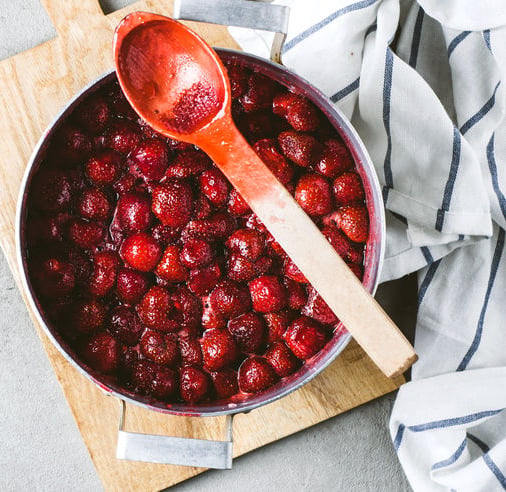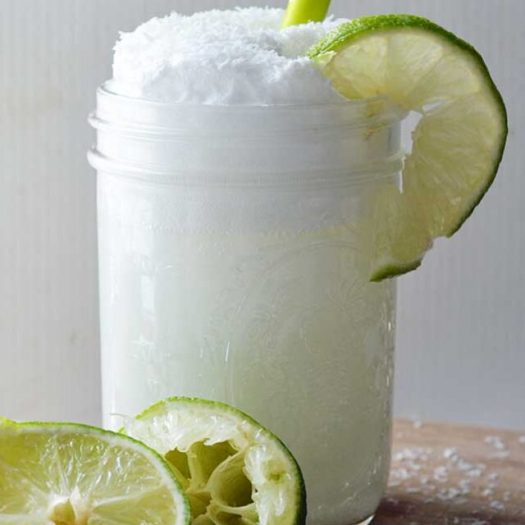You know that feeling. The feeling of cutting into a fruit pie and seeing runny liquid all over the pan. We’ve all been there. But follow these tips and you won’t ever have that feeling again! And even if you forget and you do end up with a runny pie (sigh!)…I’ve got the solutions to help you fix it.
In general, bake your pie the entire time the recipe calls for, follow the measurements exactly, and let the pie cool completely before cutting into it. But if you bake your pie and it’s STILL runny try letting it cool down (if you haven’t yet) and it will likely thicken as it cools, put it back in the oven again to activate the thickener or drain off some of the liquid off and then put it back in the oven. The last resort is to remove the filling, put it in a pan on the stove, add cornstarch, and thicken it up.

Baking a pie so you don’t get a runny filling can sound a bit overwhelming but it isn’t. Not at all. Let me break down some of the need-to-know stuff so you’ll find pie baking easy peasy.
I sprinkle tapioca into the bottom of the crust before adding filling, no matter what other thickener is in the recipe (only for wet fruit, i.e. blueberries, raspberries, rhubarb).
CrazyCatLady622189
Why is my pie runny?
Baking with fruit can be a tricky business because different fruits have different water, sugar, & pectin properties that require various thickening processes and baking requirements. If you veer off from a pie recipe even a small bit you might find your pie runny. Luckily most runny pies are culprits of the same mistakes (usually under baking or under cooling) and you can almost guarantee that you won’t have a runny pie again if you follow good pie-baking tips.
Stick with your favorite pie recipe.
Do you have a favorite pie recipe already (hopefully it’s one from here at NellieBellie :))…stick with it! After all, you know it works!
If you find that you would like to change the recipe up don’t change the recipe too fast at once. Make a single change at a time so you know what works or what didn’t work. And of course, if you DO decide to try an entirely new recipe be sure to follow the recipe as written. Pies (especially fruit pies) are fiddly and can’t be played with too much before they go wonky only you.
Bake the pie fully.
Most thickeners activate after maintaining a certain temperature long enough. If you don’t leave the pie in the oven long enough your thickener doesn’t get to the necessary temperature and time to thicken your filling.
You want to see thick bubbling! The bubbling of the filling is activating the natural gelatin of your fruit as well as your thickeners. Be sure your pie stays in the oven for plenty of time to get to this bubble stage.
If needed, use a pie shield to help protect your crust from burning. If you have a double crust, add an aluminum foil cover to protect the top.
Bake the fruit pie at a high temperature.
Most thickeners need to get to around 140°F to start thickening but need to boil and then stay under boiling for several minutes to get rid of the starchy flavor. If you don’t bake your pie at a high enough temp your thickener doesn’t get to the necessary temperature for a long enough time to thicken your filling.
Also, that high temp is needed to get your pie crust light & flaky.
If needed, use a pie shield to help protect your crust from burning. If you have a double crust, add an aluminum foil cover to protect the top.
Follow the pie measurements exactly.
The measurement of thickener to fruit is on purpose and measured to match the water content of the fruit. Changing the amount of fruit and especially the kind of fruit a bit can change the way the thickener works. I would not recommend changing the kind of fruit (go look for a pie recipe for the desired fruit, instead) If you decide to change up the amount of fruit be aware of the following ratios:
| For 1 cup of fruit | Product |
|---|---|
| 2 teaspoons | All-Purpose Flour |
| 1/2 teaspoon | Instant ClearJel |
| 3/4 teaspoon | Tapioca |
| 1/2 teaspoon | Cornstarch |
Cool the pie completely.
Some thickeners continue thickening for up to 24 hours after coming out of the oven. In fact, one of the biggest mistakes pie makers make, apart from not cooking their pie long enough, is not cooling their pie.
Let fruit pies cool for at least 3 hours before slicing them. In fact, I recommend letting a pie cool overnight if you find it to be slightly runny. You’ll most likely find that the pie will set up during the cooling time. Problem solved!
Let the fruit sit in sugar before baking the pie.
An easy trick that helps eliminate extra liquid in fruit pies before they hit the oven is to put the fruit into a colander, sprinkle a couple of tablespoons of sugar on the fruit, stir it up, and let the liquid drain off.
Don’t lose all that yummy liquid! You can save it for syrups, coffee, or ice cream.
Pre-cook your fruit (my favorite method!)

Although pre-cooking your fruit sounds like an extra step…I prefer to create my fruit filling before my pie even hits the oven so that I can be sure I like the taste and texture. This method works especially well for fruits like apple and blueberry with high moisture content and means I don’t have to reach the boiling point for my thickener and my pie doesn’t require as long of a bake time.
You can find my favorite spiced pear and apple pie here:
Vent your Pie crust
Although a full double crust looks amazing it isn’t the best option for a fruit pie. In fact, the crust keeps all the steam (and liquid) inside the pie instead of allowing it to escape. The best crusts for fruit pies are going to allow the filling to bubble up and let steam escape. Opt for slit top crusts, lattice crusts, crumble topping, or only a single crust.
Try my Grandma’s BEST pie crust recipe:
Easiest ways to fix a runny pie.
The easiest ways and hopefully ONLY ways you’ll ever need to know are:
- Put your pie back in the high temp oven on the lowest rack until the filling is bubbly and the crust is brown. If needed, use a pie shield or aluminum foil to keep the crust from burning.
- Let your pie cool overnight. Don’t be tempted to cut into it sooner!
- If possible, pour the extra liquid off the pie (save that for ice cream!) and pop it into the freezer for 10 or 15 minutes before serving. It’ll hide the runniness and taste great!
Last resort to fix a runny pie
Sometimes I stick it in the fridge or just serve it in a bowl with ice cream.
Rebecca
I use a spoon to eat it.
Jan
The absolute last resort to fixing your runny pie is:
- Remove the filling from the pie and add it to a saucepan on the stovetop.
- Add a bit of cornstarch (refer to the table above for measurements) and gently heat it to a boil.
- Turn the heat down and let the fruit simmer for a few minutes to activate the cornstarch.
- Cool the filling down completely before adding it back to your pie crust (or a new pie crust?) and either serving the pie as is or reheating it in the oven.







